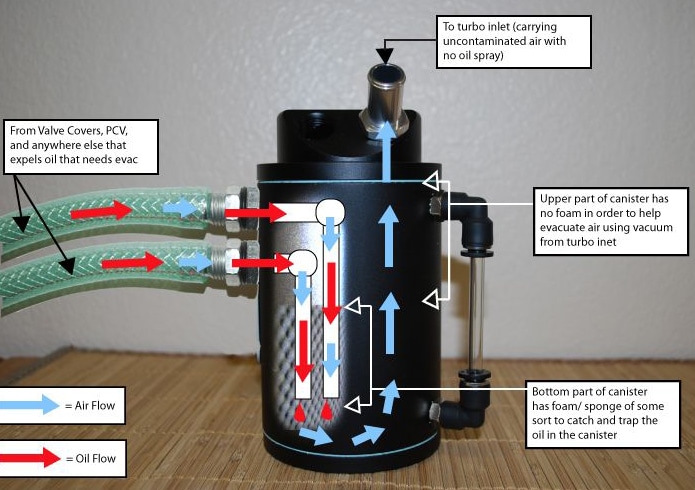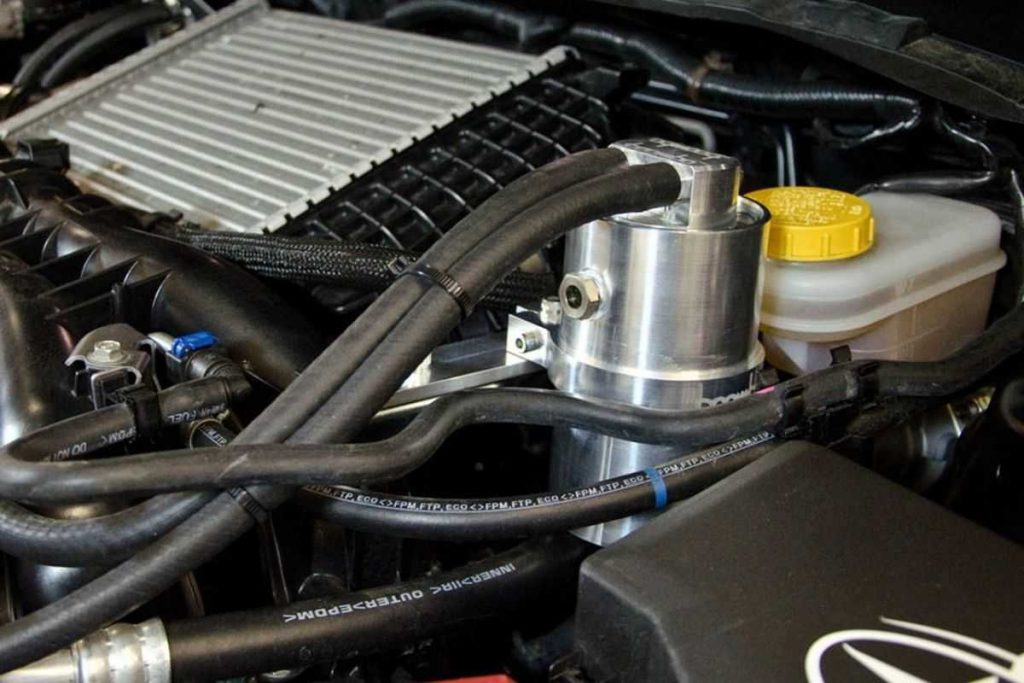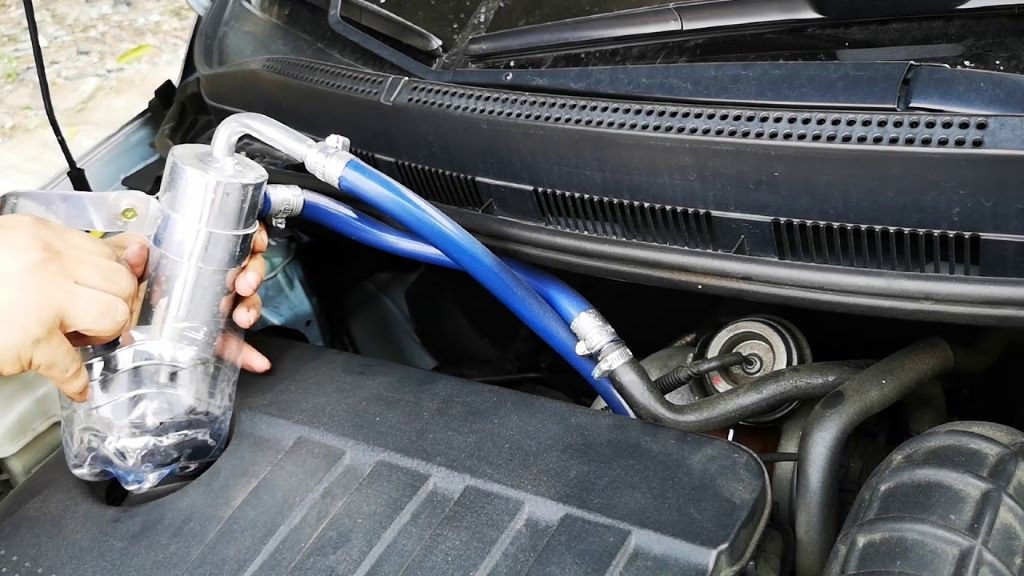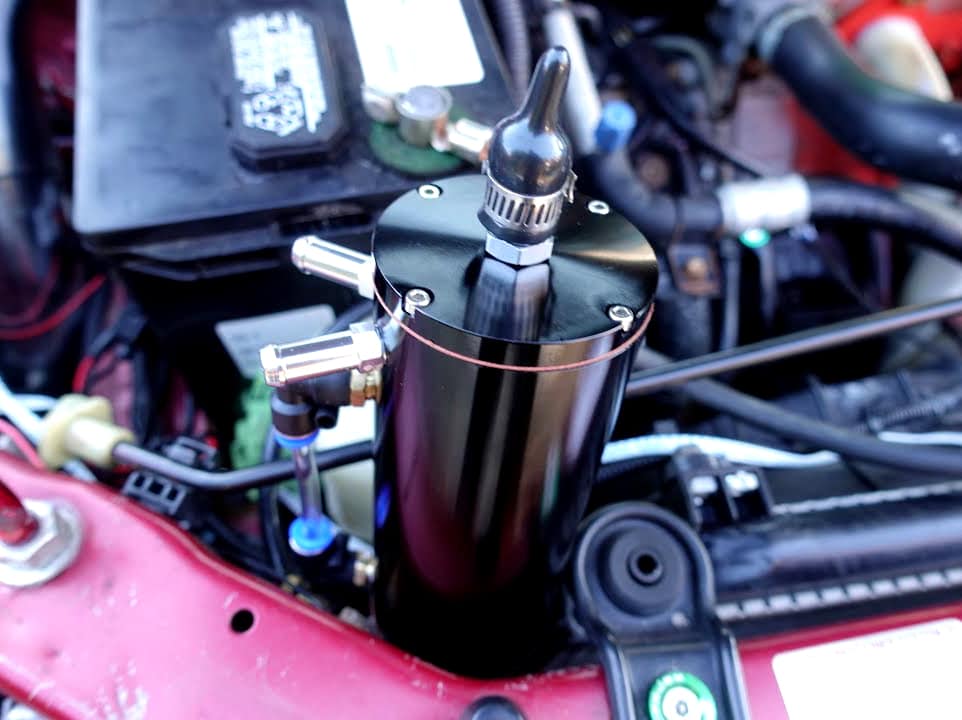Let’s dig deeper into the oil catch can pros and cons along with its basics and benefit to grasp a better understanding of the total gadget with Car From Japan right away.
Contents
- What Is An Oil Catch Can
- Oil Catch Cans Pros: The Ultimate Advantages
- Oil Catch Can Cons: The Inevitable Drawbacks
- How Does An Oil Catch Can Work
- Which Type Of Driving Will Need An Oil Catch Can
- Why Do You Need An Oil Catch Can?
- FAQs On The Oil Catch Can Pros and Cons And Other Related Issues
- Oil catch can type
- Will a catch oil can improve your car’s performance?
- Do oil catch cans help increase your car fuel economy?
- Can oil catch can increase horsepower?
- What happens if the oil catch can is filled?
- How do you know if your oil catch can is full?
- Do you have to clear the oil catch can regularly?
- Can you safely clean an oil catch can with any cleaning solution?
- Do oil catch can have a warranty?
- How often to change the oil catch can filter?
- Does your car need two oil catch cans?
- Do you need a check valve for an oil catch can?
- Does the car need an oil catch can if it does not have a PCV valve?
- Is an oil catch can needed if your car is turbocharged?
- Wrapping Up On The Oil Catch Can Pros And Cons
What Is An Oil Catch Can
An oil catch, a device connected to a car’s crankcase ventilation system, can help keep your engine clean and running smoothly by catching any air and other contaminants that may be in the oil. Some cars come with oil catch cans as standard equipment. These typically have deviations, but not always. Oil catch cans are usually considered to be an aftermarket modification, but they look and function like a piece of original traditional car equipment.
For the physical appearance, their fasteners and nozzles are located on the outside. And they are perfect for keeping your engine running smoothly. This component usually is made of plastic.
Oil Catch Cans Pros: The Ultimate Advantages
Here are some benefits an oil catch can offer you on a sunny, busy, and carefree oil inspecting day.
- Turbocharged and direct fuel injected engines can both work well with this device.
- This device can help improve your engine’s overall performance by trapping any remaining oil and protecting the intake manifold and valves from contamination.
- This oil catch can helps ensure the long life of your engine. Old engines run poorly because they can not properly use the fuel they are given.
- An oil catch can can help your engine use fuel more efficiently, so it can keep running smoothly.
- It presents the new reverse PVC technique that will help to re-introduce the air and oil in the intake manifold, fixing the issue at its source. Lowering the octane level will make your engine run less efficiently.
- The engine may start to fail because of the accumulation of dirt and carbon in the intake manifold and valves. But oil catch can can strictly prohibit the formation of deposits.

Oil Catch Can Cons: The Inevitable Drawbacks
Oil catch cans are effective weapons for protecting the engine and improving performance, but they still have some drawbacks.
- If you want to keep your oil catch can clean and free of debris, an oil catch can installation on the interface with the PVC system is the perfect solution. This means that the engine warranty is no longer valid.
- The device results in your vehicle not being able to perform smog detection. That’s why, in some regions, it is illegal to use this type of oil-catching device.
How Does An Oil Catch Can Work
Now, if you notice the engine of any high-performance car or a race-winning car, you may find the oil catch can that is installed. Their superior speed and smooth ride are due to the advanced uses of this assisting device. Without an oil catch can, your high-performance ride will suffer.
This engine protection product is a great way to keep your stamina up and your engine safe. The machine is essential to achieving high performance. Unfortunately, many people are indifferent to its functionality. Their lack of understanding of an oil catch can’s benefits means they are not getting the most out of this practical tool.
However, there are some myths acting as the misunderstanding that oil catch can damage a vehicle in the long term. People are coming up with a detailed oil catch can pros and cons guide because they want to make sure drivers are doing the best device pick for their car. The advanced oil-catching trait will somehow clear your mind, help you improve your car’s performance, and make it a local street racing champion.
Which Type Of Driving Will Need An Oil Catch Can
Overall, the turbocharged automotive engines used in high-speed race competitions need an oil catch can to keep the engine running smoothly. It will help keep your engine running smoothly and efficiently, ensuring peak performance. Because keeping your intake system clean with an effective tool will help your engine perform better, and in turn, help to lower your fuel consumption.
The oil catch can also comes with a premier-grade hose with a PCV valve to ensure your car will stay clean and free from harmful pollutants. It can also offer high pressure and high heat resistance seals for engines that need protection from damage and enhancement of their life cycle. Furthermore, oil catch cans can prevent oil from flying out, keeping things clean and tidy.
Why Do You Need An Oil Catch Can?
Any used or new car or truck will blow gas during the combustion process. And this is a reason why we can see the buildup of vapor and contaminants in the engine intake manifold and throttle body. All because the engine is not running functionally. These harmful influences can be a burden to the improvement of the overall performance of your vehicle. With that said, do you have any questions about how to get rid of the existing and inevitable problem? And just so you know, the oil catch cans are an effective tool to reduce oil spills and possible engine failures.
When you place the oil catch can within the system, it will extract the Positive Crankcase Ventilation valve and separate contaminated air from the oil. The process ensures complete ventilation of the crankcase, reducing the risk of oil contamination. Moreover, the oil catch can is perfect for storing dirt and soil, which will help to enhance the engine’s durability. By using an oil catch that can trap oil and air before reaching the core of the engine, you can help protect it from tons of unexpected damage.

Typically, there are two types of car engines. One is turbocharged & the other is a naturally aspirated engine. Turbocharged engines are more efficient and produce more power than engines energized by natural gas. Both engines are experiencing gas blows because of the amount of carbon and grime produced by the engines, especially if the number is higher if the car is running in turbo mode.
This creates a dangerous environment when the remaining oil turns into harmful substances such as charcoal. As a result, if you do not seek a way to change the process or keep using them, your turbo engines will be damaged.
Besides, turbo engines with direct injection are the latest and most efficient type. Traditional fuel engines often produce more pollution than engines that run on clean energy sources. But with the latest technology, these engines can now clean up quickly, reducing the amount of pollution they produce. With a direct injection fuel system, the fuel is delivered straight to the engine’s combustion chamber. This results in greater fuel efficiency and improved performance.
But in other types of engines, fuel does not reach the valves. Given that the engines are dirty, it is unable to keep them running cleanly. Ultimately, dirty or tainted air ends up coming into your car through the air intake and engine valves, reducing engine performance and durability that can harm your car’s performance. And in the end, it is a crucial time for you to make use of an oil catch can’s versatile benefits, making it the best way to solve these hardened issues.
Here are some of the most asked questions that users want to know or figure out more about the love-hate relationship with an oil catch can and its related issues in caused effects and car performance.
Oil catch can type
In general, the oil-catching tank can offer two different combinations. A direct bolt kit and the universal catch can. With both of these options, you’ll have a perfect fit for your vehicle. There is only one difference between these two products. A universal oil catch tank can have an easy installation method. The direct bolt catch can be a more difficult-install device on your vehicle, depending on the brackets and hoses it needs to fit. Both of these have the same elements, so you can choose whichever one you prefer.
Will a catch oil can improve your car’s performance?
Yes, an oil catch can will partly improve your driving performance. With an oil catch can, by preventing oil from entering the combustion chamber, you can find the reduced noise of knocking and pinging during acceleration. K There is a reason why knocking is heard when an engine is running. It is the air/fuel mixture that is detonating in the cylinders. When this happens, severe damage to your engine will likely occur.
Do oil catch cans help increase your car fuel economy?
One way an oil catch can benefit your car’s fuel economy is by preventing excess engine wear and tear. Additionally, it will help you save money on fuel by catching oil that has been spilled or leaked.
Moreover, an oil catch can prevents engine smoke and soot from being created, which may ultimately lead to a decrease in performance. By installing the innovative oil catch can, you help reduce fuel consumption and keep your engine clean, creating a carefree status for both the engine and your wallet.
>> Check More: What Component of A Car Has The Biggest Impact on Fuel Economy?
Can oil catch can increase horsepower?
Yes, there is an undeniable benefit of using an oil-catching tank for your engine with the additional aim to improve horsepower. By decreasing the amount of unwanted oil that can enter the engine, an oil catch can reduces the risk of pre-ignition and knocking. This means that the air and fuel mixture in the cylinders can be more accurately controlled, which results in increased combustion efficiency and therefore produces more power.
What happens if the oil catch can is filled?
If your oil catch can is filled, the oil vapors from your engine may not be emitted throughout and properly, which can lead to several oil/engine-related issues. For example, you may encounter decreased fuel efficiency, lowered driving performance, and engine damage.
How do you know if your oil catch can is full?
The signs of your filled oil catch cans will be easily noticed as follows:
- The increased frequency and constant of the air pressure relief valve.
- You should empty the can if you notice liquid in the bottom of the can.
- Your engine starts running rougher than usual.
Do you have to clear the oil catch can regularly?
Yes, it is recommended for you to dry the oil-catching tank every 500 to 600 miles to prevent the can from overfilling and causing a mess surrounding the engine area. However, if you do not have time to empty your oil catch can every time you change your oil, you can do it when it is the time of your oil change due.
Can you safely clean an oil catch can with any cleaning solution?

Remember to dry the can completely before reattaching it. If you don’t clean your engine regularly, the solvents or degreasers could damage it. Overall, using oil catch cans can help improve the performance of your engine and keep it running longer. However, keep in mind that they need to be maintained occasionally to work well.
Do oil catch can have a warranty?
No. Your oil catch can’s warranty is not void because you used an aftermarket part. In reality, no one would be able to adjust any part of the car without invalidating the original warranty. To have your warranty voided by an automaker, the automaker has to prove that the aftermarket part, the oil-catching can you installed was the cause of the engine failure.
How often to change the oil catch can filter?
This is a tricky question because it depends on the conditions in which your vehicle operates. If you have a lot of short trips with frequent stops, your oil catch can will get dirty faster than if you mostly drive on the highway. For optimum performance, we recommend you have your catch can filter inspected and cleaned every 15,000 to 35,000 miles. If you notice that your oil catch can fills up faster and more unusually, it may be time to check and change the filter with a more dense occasion.
Does your car need two oil catch cans?
If you do not necessarily want to run two catch cans, you can instead use one. If you want to make sure your oil catch cans are both of the same quality and offer the same level of advantages, we recommend choosing them from the same brand. This will guarantee that they work in the same manner and deliver matching outcomes.
Do you need a check valve for an oil catch can?
Absolutely. A check valve is essential to preventing oil from entering your engine when it does not operate. If something goes wrong with the oil catch can’s diaphragm or if there may be a backfire, these unfortunate circumstances will happen.
Does the car need an oil catch can if it does not have a PCV valve?
The oil catch can is designed to prevent oil and leaked gas from entering the engine, keeping your vehicle running smoothly and efficiently. Even if your car does not have a PCV valve, there is remaining crankcase pressure within the system that needs to be cleared. In this case, an oil-catching tank is still necessary.
Is an oil catch can needed if your car is turbocharged?
Yes. If your car has a turbocharged engine, an oil catch tank is especially needed, because turbochargers are known for their ability to produce a lot of blow-by when hot gasses from the engine escape past the piston and into the crankcase. By catching blow-by before it has a chance to mix with the oil that may have a high chance to be clogged up and sludged forming, a catch can help to keep your engine running smoothly. In general, keeping your engine clean and well-operating is a vital maintenance step for any healthy part of your car.
Wrapping Up On The Oil Catch Can Pros And Cons
After scrolling through the oil catch can pros and cons, now you have partly discovered the advantages of this device in everyday driving life. Its numerous beneficial offers may be the reason why skilled car racers and professional drivers are always at the ready pace to install an oil catch can without complaining or wondering about anything.
The oil catching device captures oil vapors before they can enter the engine and enhances the overall fuel efficiency by seizing the hydrocarbon emissions from the cars. On the other hand, the oil catch cans can be an exposing way for oil spills to happen, and they also require regular maintenance to keep the engine working effectively day by day.
Typically, things will have both good and bad sides. So the most important thing to notice is knowing how to take good advantage of the beneficial use and learn ways to initially prevent the drawbacks that may happen and harm the whole system.



